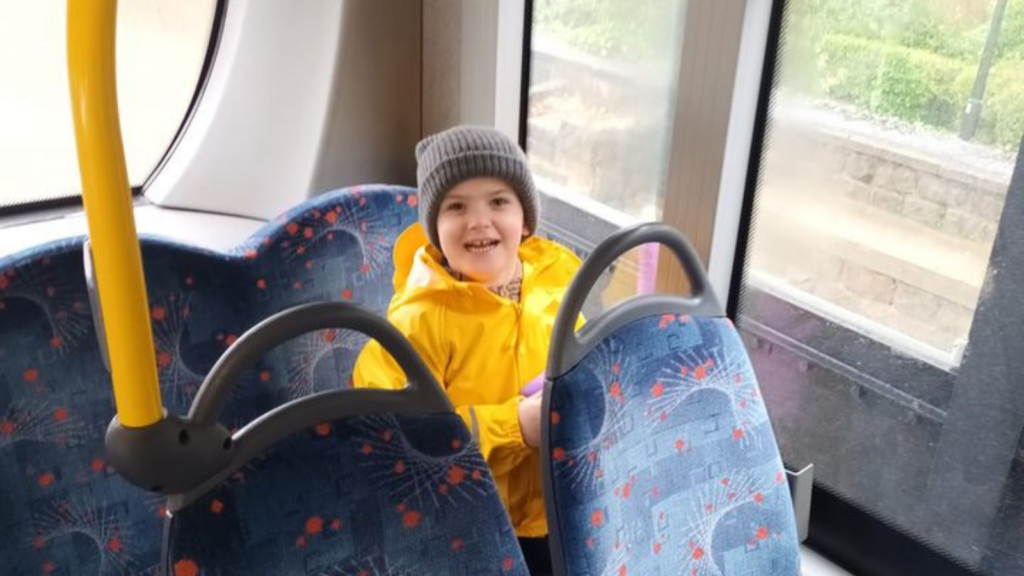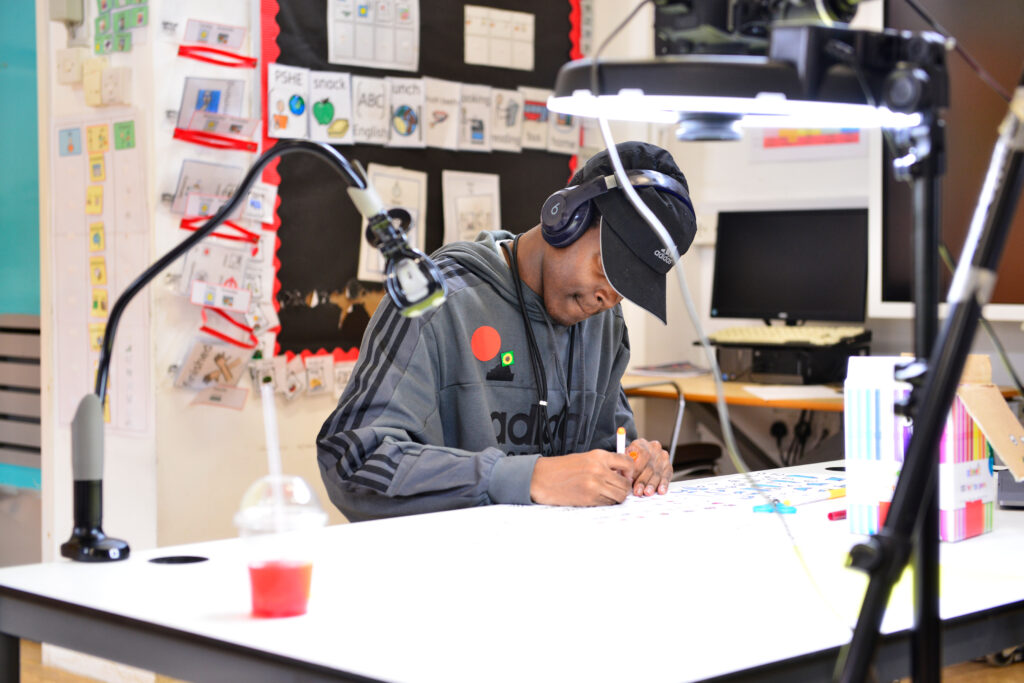Disability Living Allowance (DLA)
13 mins read
This advice applies in England, Northern Ireland and Wales. Read about Child Disability Payment in Scotland.
Disability Living Allowance (DLA) is the main benefit for children under 16 with a condition or disability. DLA helps to meet the extra costs that you might have as a result of your child’s disability.
In this article
What is DLA?
Disability Living Allowance (DLA) is the main benefit for children under 16 with a condition or disability. DLA helps to meet the extra costs that you might have as a result of your child’s disability.
Families we speak to describe getting this benefit as ‘life-changing’.
A new benefit – the Child Disability Payment – replaces DLA in Scotland.
Once your child turns 16 they will normally be asked to claim Personal Independence Payment (PIP) instead of DLA.
Can my child get DLA?
Any child who has a disability or illness might qualify for DLA. You don’t need to wait for a formal diagnosis to make a claim. It is sufficient that they have some form of disability.
However, you will need to show that your child needs substantially more care or supervision than other children of the same age who don’t have a disability or health condition. Any decision to award DLA will be based on how your child’s condition impacts on their day-to-day life.
You can claim DLA for a child from the age of three months, or from birth if your child has a terminal illness.
You can get DLA for your child regardless of whether you are working or not. It isn’t means-tested, so it does not matter what income or savings you have.
Your child will also have to meet certain rules linked to their immigration status and the length of time they have lived in the UK. If your child is three or over and hasn’t been in the UK for at least 26 weeks out of the last year, call our free helpline for more advice.
Three months is usually the earliest you can get the DLA care component (unless your child has a terminal condition).
All very young children need a lot of care and attention, so the younger your child, the harder it can be to show they need more help than other babies of the same age. But you can still get DLA if you show that your baby needs a different type of care than other babies, or if that care has to be provided more frequently, or over a longer period.
For example, all babies need help feeding but if your baby takes longer to feed, has feeding problems or needs feeding by a tube or drip then they are likely to qualify for the care component.
Other common situations where a baby is likely to qualify include:
- Babies with severe visual or hearing impairments.
- Those who have seizures.
- Those with renal failure.
- Babies with severe multiple disabilities.
- Babies who are born very prematurely.
Babies who need suctioning, oxygen treatment, or who have had a surgical procedure, such as a tracheotomy or colostomy, are also likely to qualify.
This list is not exhaustive, and other babies may qualify. Because of the difficulties getting DLA for babies, get specialist help to fill in the form.
How much DLA will I receive?
DLA is made up of two components. Depending on their circumstances, your child may qualify for one or for both. A child can get the care component from age three months (or from birth if terminally ill). They can get the mobility component from the age of three years.
To assess what rate of DLA should be paid, some of the words in the rules have a specific meaning:
Bodily functions
Includes anything to do with how the body works, like breathing, eating, drinking, hearing, seeing, walking, sitting, dressing, undressing, washing, bathing, toileting and sleeping. If the help can be done in another room, away from the child, it is unlikely to count unless it is closely connected to something personal, for example changing bedding after a child has wet the bed.
Supervision
Someone present to prevent any accidents or harm to your child or others.
Substantial danger
There must be a realistic possibility that without supervision your child could seriously risk harming themselves or others. This situation may arise infrequently or be a one-off.
Night
Starts from when the whole household goes to bed and ends when everyone gets up. Normally assumed to start around 11pm and end around 7am.
Care component
If your child needs a lot of extra watching over or help with personal care, they should qualify for the care component of DLA. This is paid at one of three different rates depending on how much extra care your child needs.
The care component weekly rates from April 2025 are:
- Lowest rate care – £29.20
- Middle rate care – £73.90
- Highest rate care – £110.40
Whether you get the care component and the rate you get will depend on the amount of extra care or supervision that your child needs and whether this happens during the day or at night.
The lowest rate care component
This is paid if your child needs help with personal care for a ‘significant portion of the day’. This is usually taken to mean for at least an hour on most days – for example, help with washing and getting dressed in the morning. This help may be given all at once or be spread out through the day.
Sometimes less than an hour’s care will be sufficient to meet this test – for example if the help is spread over a number of short periods or is particularly intensive in nature.
The middle rate care component
This is paid if your child has either ‘day-time needs’ or ‘night-time needs’. Day-time needs means they need either:
- ‘Frequent’ help with personal care, in connection with their bodily functions. This means several times throughout the day, or
- Continual supervision throughout the day to avoid substantial danger to themselves or others. Continual supervision means frequent or regular supervision, rather than non-stop supervision.
Night-time needs means that during the night your child requires either:
- ‘Prolonged’ help with their personal care. This means for at least 20 minutes, or
- ‘Repeated’ help with personal care during the night. This means at least twice, or
- To avoid danger to themselves, or others, another person needs to be awake and watching over them for either a ‘prolonged’ period or at ‘frequent intervals’ (this means more than twice).
The highest rate care component
Paid if your child has day-time and night-time care needs, or if they qualify under the ‘special rules.’
To qualify for the DLA care component, your child’s care needs must ultimately stem from a disability. And they must need substantially more help than a child of the same age without a disability.
Mobility component
The mobility component is for children who need help in getting around. It is paid at one of two rates depending on the nature of the mobility problems.
The lower mobility component is for children who need extra guidance or supervision out of doors. A child can get the lower mobility component from the age of five. The higher rate of the mobility payment is for those with severe walking difficulties or those who are deaf blind or severely visually impaired. A child can get it from the age of three.
The mobility component weekly rates from April 2025 are:
- Lower rate mobility – £29.20
- Higher rate mobility – £77.05
Claiming DLA higher rate mobility
There are specific rules that allow some children with severe learning difficulties or autistic spectrum disorders to qualify for the higher rate of the mobility component.
Visit our webpage below to find out more.
Making a claim for DLA
There is a specific form for claiming DLA for a child: the DLA1 Child (ALT) form. However, it’s better to phone the DLA helpline and ask for this form, rather than downloading it yourself.
This is because they will stamp the form with the date you made your call. If your child qualifies for your DLA, you’ll get it from this date. (DLA can’t be backdated beyond this). If you don’t call, the earliest you can get DLA from is the date the benefits office receives your completed form. It can take time to complete the form and get any medical evidence you may need. So it’s always better to call and ask them to send you a form.
Order a claim form from the DLA Unit by calling 0800 121 4600. If you’re in Northern Ireland, call 0800 587 0912. You have six weeks to complete and return the form.
If your child has a terminal illness, you can make a claim under “special rules”. Call our helpline for more details.
Completing the DLA form
We recommend that you keep a diary for a week before tackling the form. This will be useful for providing evidence of your child’s extra needs. It will also help you think about all the extra things you have to do for your child and how long this takes.
If possible, get specialist advice from a welfare benefits adviser or someone else who is familiar with completing the form. Our national freephone helpline can put you in touch with local help to complete the form. You can search for local benefits advisers by using the Turn2Us find an adviser tool.
A decision on your child’s claim will be made by someone who has never seen your child. It is important that you make clear all the extra care and support that your child needs. Don’t assume that the decision maker will already have this understanding.
Decision makers aren’t medically qualified. They may have little or no knowledge about your child’s condition. They will rely on medical information you supply with the claim, plus their own guidance on disability in children. If they need more evidence, they may write to your GP or hospital consultant. However, there is no guarantee they will do this. It might be a good idea to try and gather some supportive evidence yourself and send it to them.
For question-by-question tips on completing the form, see our webpage below.
Getting a DLA decision
Once you’ve sent your completed form to the office dealing with your DLA claim, you should get an acknowledgement within two weeks. You should normally get a decision within three months.
The Department for Work and Pensions (DWP), or Social Security Agency (SSA) in Northern Ireland, will send you a letter telling you their decision.
How long will my child’s DLA award last for?
Some children get a DLA award for an indefinite period. But most children’s DLA awards last for a fixed period, for example three years.
Towards the end of that time, the DWP/SSA will normally invite you to reapply for DLA. They’ll send you a new claim form to complete. If they haven’t automatically sent you a renewal pack, and you have less than 20 weeks left before your existing award runs out, contact them to ask that they send out a renewal pack.
It’s very important that you return the renewal forms before the current award finishes. If you don’t, you could lose out on benefit payments in between.
A renewal claim is treated as a new claim. It’s important to provide as much information as you did when you first claimed. If you disagree with your child’s renewal award, you can challenge the decision in the same way as challenging an original decision.
What if I’m not happy with a DLA decision?
If your child is refused DLA or awarded it at a lower rate than you expected, you may wish to challenge that decision.
Firstly, you can ask for a decision to be looked at again. This is known as a ‘mandatory reconsideration’ request, and you can do it by phone or in writing. If you want to do it in writing, you can either use form CRMR1 form or send a letter. You must normally ask for this within one month of the date of the decision you are challenging. Late requests will sometimes be accepted.
If you are still not happy with the outcome of the mandatory reconsideration, you can request an appeal. You must do this either online or in writing using an appeal form (form used in Northern Ireland). You must normally do this within one month of the date on your mandatory reconsideration decision. Late appeals will sometimes be accepted.
Find out more about mandatory reconsiderations and appeals.
Changing an existing award
If your child already gets DLA, their circumstances have changed and they now need more help, it may be possible to get their award increased.
You can contact the DLA office to ask them to look at your child’s award again. This is known as a ‘supersession request’. Decision makers can supersede any decision (including a tribunal decision). You can ask for a supersession at any time.
If you are not happy with the outcome of a supersession, you have the right to ask for a reconsideration and an appeal against that new decision in the usual way.
If your child is aged 16 or above, reporting a change of circumstances that may affect their DLA award will lead to them coming off DLA and being assessed under the PIP rules instead.
Warning! There is a risk your award could go down rather than up. It is always best to get help from a Citizens Advice Bureau (CAB) or local welfare rights service first. Our helpline can put you in touch with your local service.
How does DLA impact other benefits?
DLA is not taxable, and it does not count as income for other benefits.
Instead, getting DLA can lead to an increase in other benefits you receive. It can also help you qualify for entitlements for the first time. Even if you get DLA for your child already, getting an increased rate may lead to something else.
And getting DLA can mean you’re eligible for other forms of financial support, for example help with heating and transport costs.
See our webpage, below, for more information.
DLA and stays away from home
Stays in residential accommodation affect payment of the care component of DLA. Payments usually stop when your child spends 28 ‘linked’ days in a residential care home, residential school or residential college. The mobility component continues as usual. You can find out more about these rules in our factsheet on Benefits if your child is in residential accommodation.
Stays in hospital used to affect DLA. But the government scrapped DLA hospital rules for children aged under 18. So long as your child was under 18 when they entered hospital, they can claim and receive DLA as normal despite the fact that they are an in-patient.
See our webpage below for more information.
More DLA advice
Claiming DLA higher rate mobility
Tips on completing the DLA form
Payment of DLA for a child in hospital
Related information
Parent guide: Claiming Disability Living Allowance (DLA) for children
Download now
Personal Independence Payment (PIP)
Personal Independence Payment (PIP) is a benefit to help with the extra costs of disability for adults aged 16 to pension age….
Read more
Child Disability Payment
Child Disability Payment is the main benefit for disabled children in Scotland, paid by Social Security Scotland.
Read more


